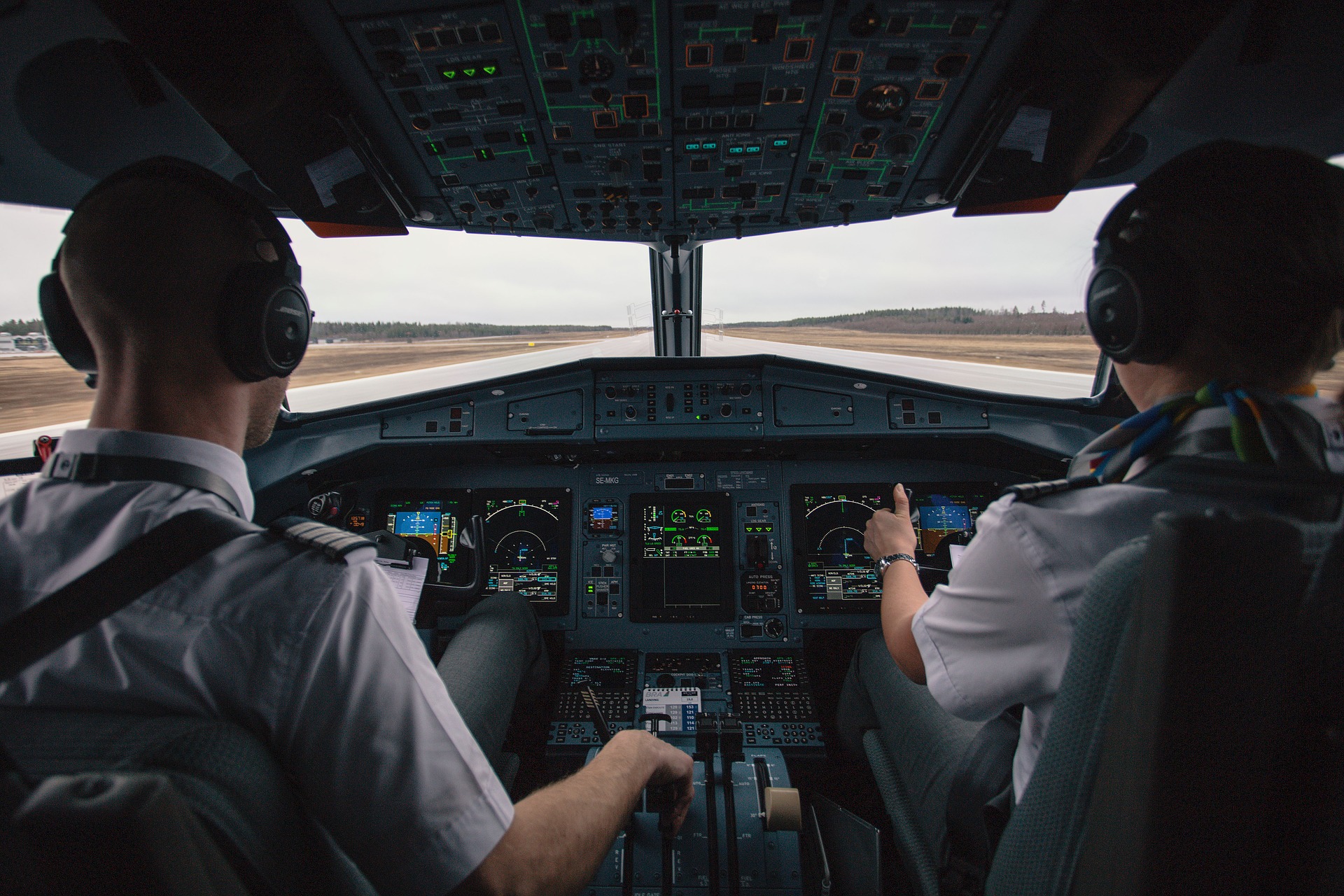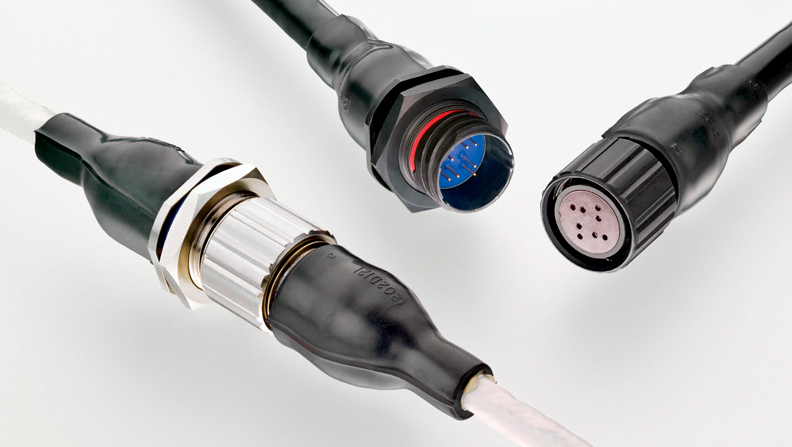Electronics are Helping to Solve the Pilot Shortage
Advanced aviation-specific components for commercial and military aircraft are producing increasingly powerful and connected hardware that can help keep aviation technology accessible to pilots.

Today, there is a critical problem in military and civil aviation: a distinct shortage of pilots. In June 2019, Boeing’s then-CEO Dennis Muilenburg called this shortage “one of the biggest challenges facing the airline industry.” According to Muilenburg, crewing the 44,000 new airplanes projected to be manufactured over the next 20 years will require training 800,000 new pilots and 750,000 new aviation technicians.
The task is monumental and the barriers are multifaceted, ranging from regulatory changes that have taken effect since the 1970s and led to reductions in commercial pilot pay and prestige to increases in certification requirements (e.g., commercial pilots must now have at least 1,500 flight hours to work, compared to as little as 250 before 2009) to technical challenges. For example, the increased use of drones for military applications keeps military pilots safer, but has also reduced the number of qualified pilots coming out of the armed forces. Increasing electronics complexity and software-controlled safety features like Boeing’s now notorious MCAS system also paradoxically have the potential to spur greater regulation and heavier training requirements.
Fortunately, innovative hardware — albeit in very different forms — is offering solutions. Aviation manufacturers are turning to aviation electronics and avionics manufacturers to develop advanced hardware that can help tame the increasing complexity of commercial aircraft and keep the pilot’s job accessible. In addition, on the other end of the spectrum, consumer electronics are stepping in to help make older, smaller planes more accessible and desirable, which is important since these are the first stepping stones in aviation for many new pilots.
MCAS: A Case Study in Complexity Management
The genesis of Boeing’s software-based MCAS on 737 MAX aircraft was changes to the design that changed flight characteristics and increased the risk of high-angle of attack situations that could lead to stall. In an effort to reduce training barriers for pilots transitioning to the MAX from the previous generation 737NG, MCAS allowed the aircraft to make flight control inputs that could correct this problem. The fatal crashes of two MAXs, at least one of which involved the failure of angle-of-attack sensor components, demonstrate the increasing importance of sensor hardware in aviation as sensors increasingly provide data to automated systems and pilots.
To solve this problem in the near term and get the MAX recertified, Boeing has embarked on a plan to both improve pilot training and update the MCAS software to compare data from two angle-of-attack sensors to reduce the risk of sensor failure causing a catastrophic situational misinterpretation. This part of Boeing’s solution points to the reality that, as sensors feed automated systems with more and more data, their redundancy and proliferation — and especially in critical systems like aircraft — must be increased.
Building the Connected Aircraft
Mirroring trends in sensor proliferation in other industries, manufacturers including TE Connectivity are creating a roadmap for connected aircraft capable of delivering the reliable sensor data today’s increasingly complex commercial and military aircraft rely upon. Achieving this proliferation of sensors requires a new generation of sensor components, cabling, and connectors that emphasize space savings, reliability, lightweight constructions, and ruggedization. Packing more and more sensors into aircraft also means that minimizing weight and space while maintaining signal integrity is key.
TE Connectivity is addressing these parameters in part with its ARNIC 836A standard MiniMRP packaging, which offers the promise of up to 40% smaller avionics packages. Smaller form factors like these are enabling manufacturers to distribute avionics electronics throughout the aircraft, putting avionics devices closer to the sensors feeding them with data and improving signal integrity, processing time, and redundancy.

TE’s CeeLok FAS-T connectors are small, lightweight, field-repairable 10Gb Ethernet connectors.
Along with an increase in sensor density comes a necessary increase in sensor connectivity, making compact, lightweight, and high-bandwidth connectors and cabling more important than ever. TE’s CeeLok FAS-T connectors (pictured above) are small, lightweight, field-repairable 10Gb Ethernet connectors that can meet these needs.
Limiting Pilot Barriers and Ensuring Safety
The genesis of Boeing’s MCAS was a desire to limit pilot barriers when transitioning to the 737 MAX, which was an admirable goal with the potential to increase the effective pool of pilots available to fly particular commercial aircraft types. In at least one case though, the critical missing part of the equation was sensor data reliable enough to consistently deliver accurate data to the system even under unusual circumstances. In concept, automation is an excellent tool for getting more pilots behind the controls of commercial aircraft, but the basic electronics infrastructure must first be in place — and proven effective — for such automation to exhibit mission-critical reliability under the extreme conditions endured during the lifecycle of commercial and military aircraft.
Boeing’s solution to MCAS’s demonstrated shortcomings now includes more pilot training to help overcome the system’s complexities and particular operational behaviors.
From Commercial to Consumer
Building reliable automation features into commercial aircraft will help open the door to a larger pool of pilots, but getting people interested in careers in aviation is an important part of solving the pilot shortage problem as well. The FAA has forecast that, while demand for commercial air travel is predicted to continue to rise, the general aviation industry will continue to suffer a long slump due to fewer young people becoming private pilots or making a career of flying. As demand for private aviation services continues to decrease, small airports will continue to become less profitable and will close in greater number, further compounding the problem by increasing the cost and inconvenience for private pilots.
Boosting general aviation interest may have an indirect effect on the supply of commercial pilots, but having more trained pilots certainly couldn’t hurt, particularly if airlines start moving to a model of training commercial pilots in-house, as the recruitment pool would be that much easier to tap.
Today, there are many old but perfectly airworthy planes available on the used market. While there’s no replacement for reliable built-in avionics, companies like ForeFlight are making these older and less well-equipped planes more accessible and more applicable for more complex applications with a suite of consumer pilot aids that augment traditional light aircraft avionics. ForeFlight’s app runs on cheap consumer tablet hardware and accessory devices that can vastly outperform the avionics on old planes. For example, ForeFlight’s Sentry ADS-B Receiver integrates several sensor components in a compact form factor that suction cups onto a small plane’s window and feeds the ForeFlight app with advanced capabilities including synthetic vision and integrated GPS functionality, including the ability to transmit the plane’s location to air traffic control and other aircraft.
In addition to making general aviation safer, technologies like ForeFlight simplify the complex activities of instrument flying, which is a skill critical for commercial pilots. These consumer-electronics-based gadgets can’t replace traditional avionics or training, but they may make the idea of flying or getting an advanced certification like an instrument rating more appealing and accessible and can affordably add advanced functionality to even old planes to further reduce barriers to piloting.
Like this article? Check out our other New Technology articles, our Military & Aerospace and Transportation Market Pages, and our 2019 Article Archive.
- 30 Years of Automotive CAN - March 30, 2021
- Industrial Interconnects Enable Advanced Process Controls in the Fresh Water Industry - February 23, 2021
- Remote Work Opens Network Infrastructures to Security Risks - December 8, 2020





